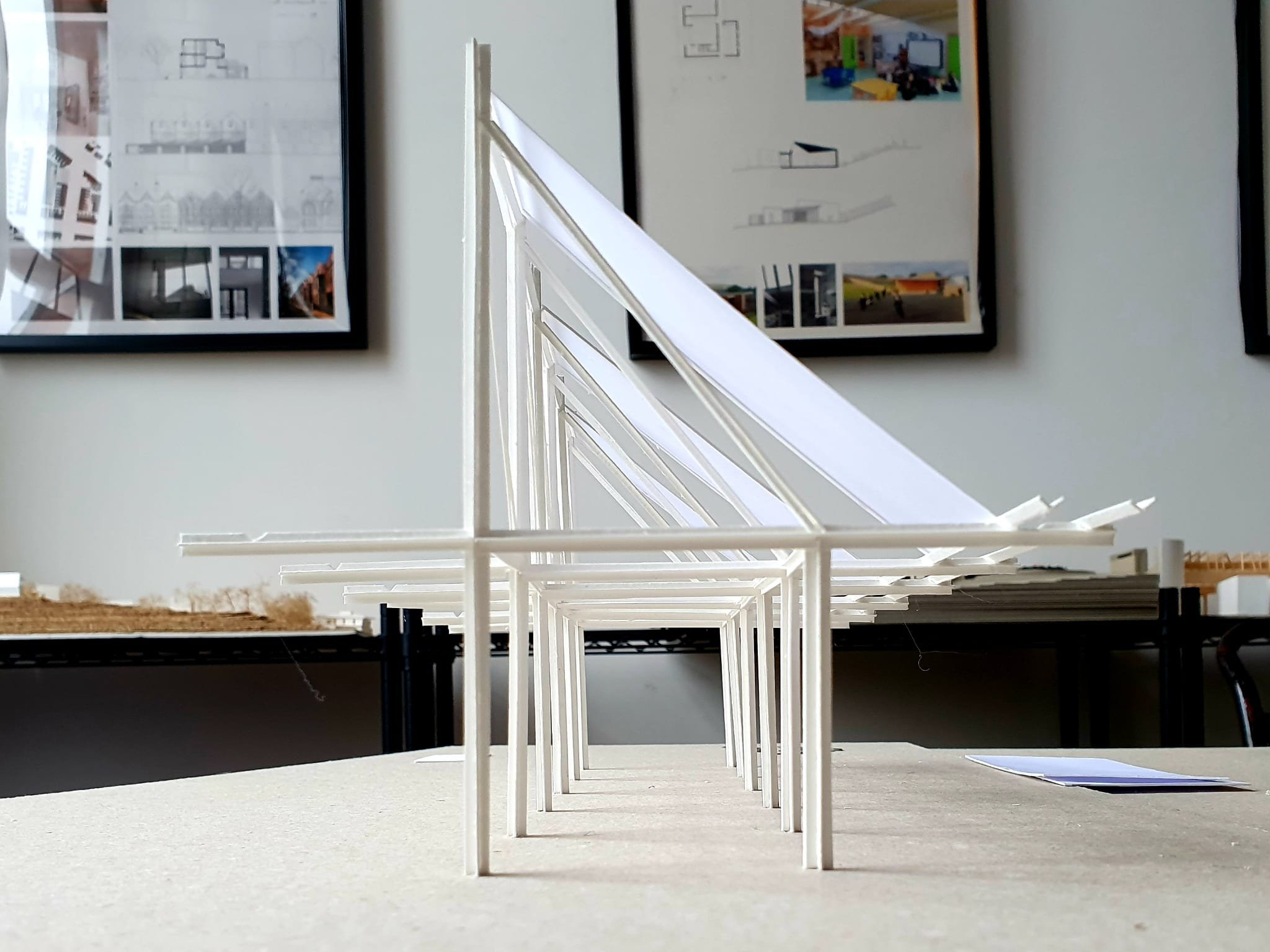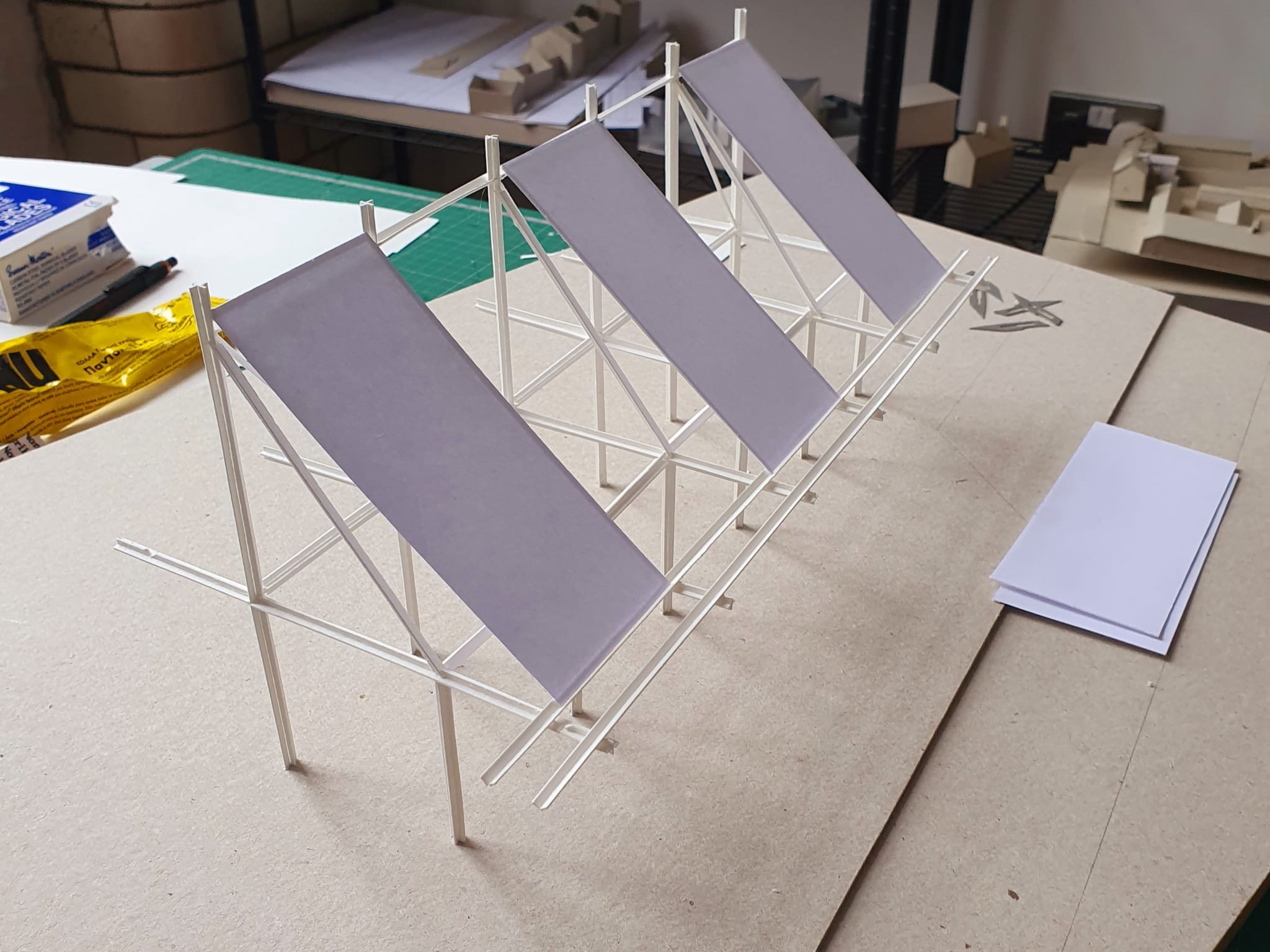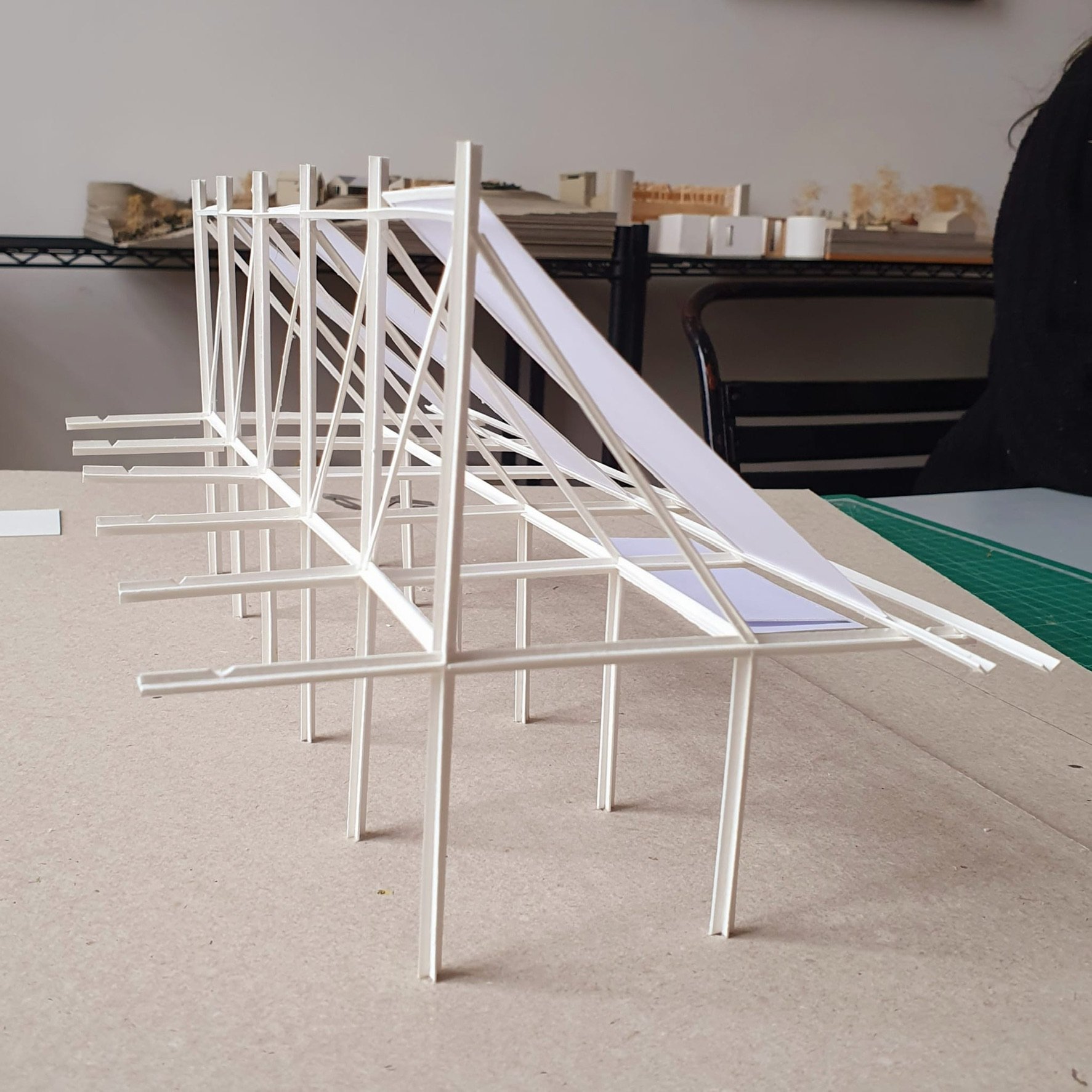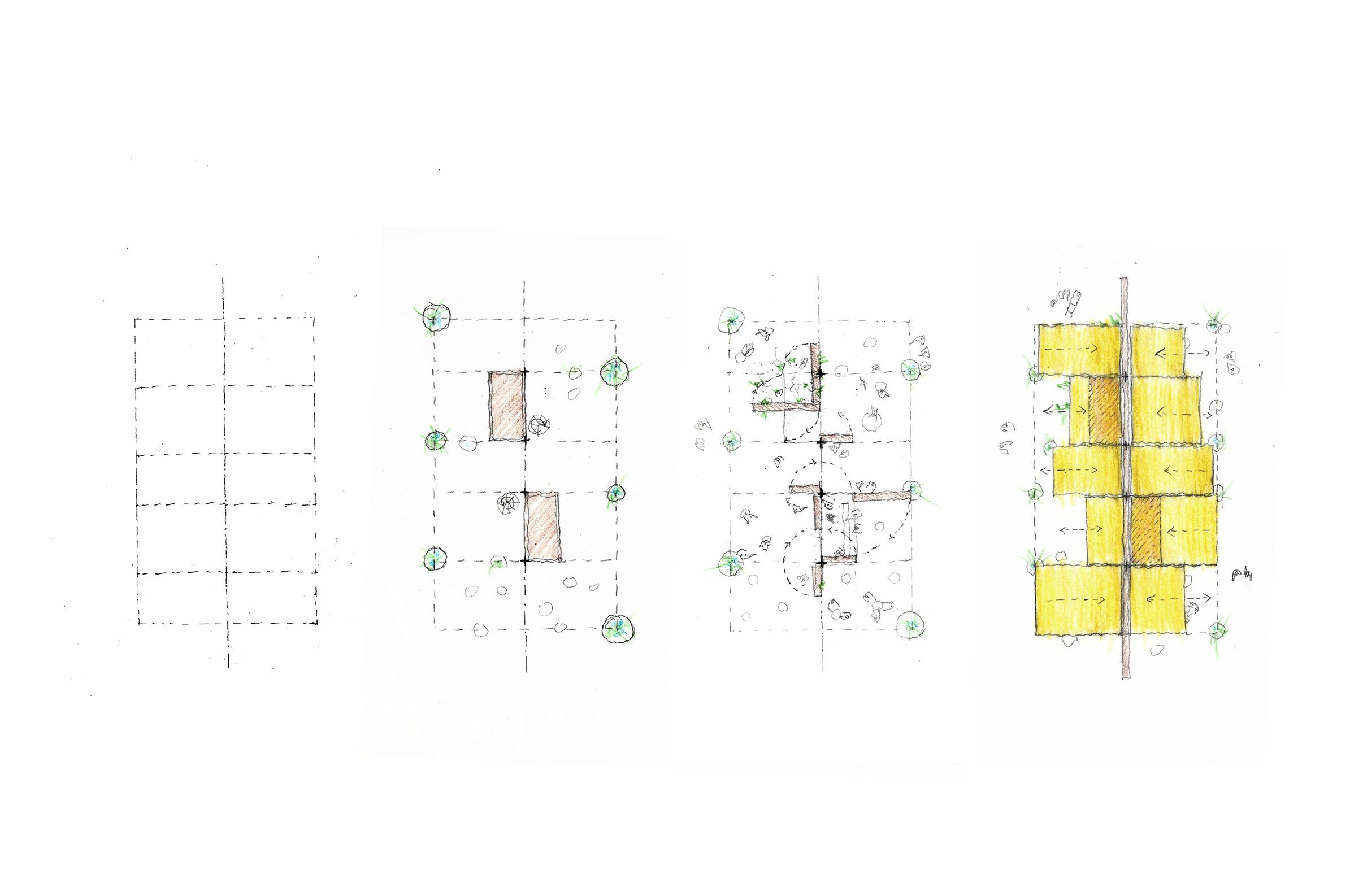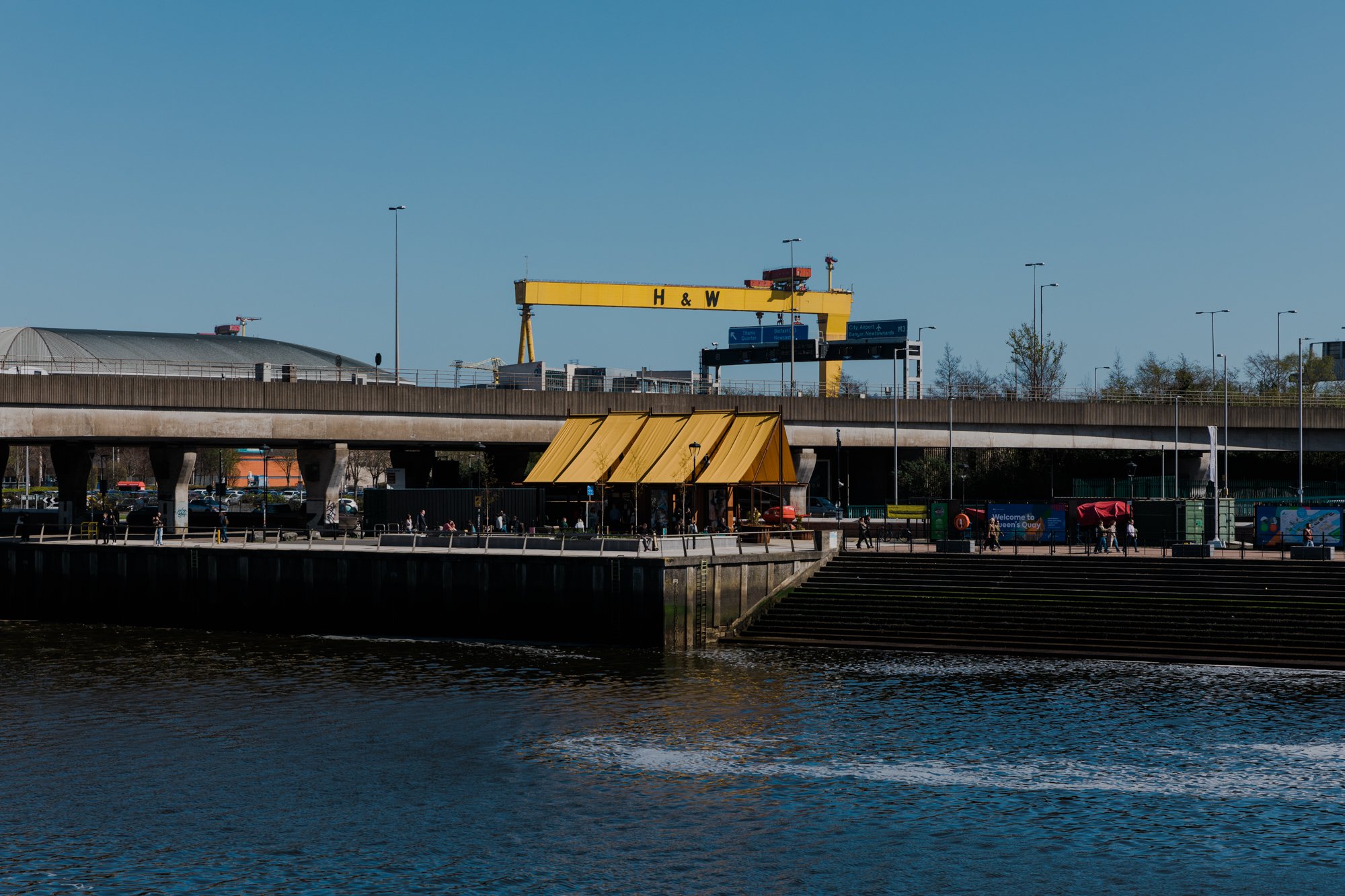
Queen’s Quay
Developed as part of the cities covid recovery strategy - the space was designed to elevate a simple coffee kiosk to something which was dynamic and civic to help activate an underutilised space. The Queen’s Quay Kiosk is a weathering steel pavilion located across the pedestrian bridge at the gateway to Titanic Quarter along the Maritime Mile on the Lagan waterfront. As pedestrians arrive at the east bank of the Lagan after crossing the Lagan Weir Footbridge, the tall, bright canopy of the kiosk welcomes them to the city’s Titanic Quarter. Under the canopy, two units crafted in weathering steel house Native Coffee and provide exhibition space for local artists, curated on a rolling programme. While these units can be closed up at nighttime, the majority of space under the canopy is open to the public to pass through or shelter underneath.
-
MMAS
Maritime Belfast Trusts,
Belfast City Council
Department for Communities
Design ID
WH Stephens
-
Completed
Queens Quay: The structure is inspired by the masts of ships moving up the Lagan to the historic heart of Belfast. The above photo looks across Queens Bridge to Queens Quay in 1888.
An exciting new chapter has opened on Belfast’s historic waterfront with the launch of the Queens Quay Kiosk—a vibrant placemaking project along the Lagan at the historic heart of Belfast. Nestled between the Odyssey Arena and Lagan Weir pedestrian bridge, this new placemaking project run by Native is more than a coffee stop, it is a hub for community, creativity, and connection with all sorts of events taking place through the week from lectures, friday evening music, sunday running clubs, artist market, saturday bakeries amongst other things.
Part of a wider regeneration strategy for the Maritime Mile, the kiosk helps activate and develop the pedestrian and active travel experience along the water. Its dynamic form—marked by colourful sail-like canopies—creates a striking landmark and a warm, inviting space for locals and visitors alike to draw them across the pedestrian bridge.
Operated by Native Coffee, the kiosk offers more than great coffee. It is a platform for local makers, artists, and independent businesses to showcase their work. A dedicated pop-up space invites the community in, while five portraits by artist Terry Bradley honour the area’s industrial heritage and those who shaped it.
Surrounded by new planting and seating installed by Maritime Belfast, the kiosk is a beacon of what’s possible through creative collaboration. Funded by the Department for Communities through the Covid Revitalisation Programme and delivered by Belfast City Council, the project has been a catalyst for developing a leftover space and underutilised space.
From morning coffee to evening events, Queens Quay is now a place to gather, pause, and connect.
Beacon along the Maritime Mile: Golden cover act as a beacon drawing people across the bridge to a previously underutilised space along the Maritime Mile.


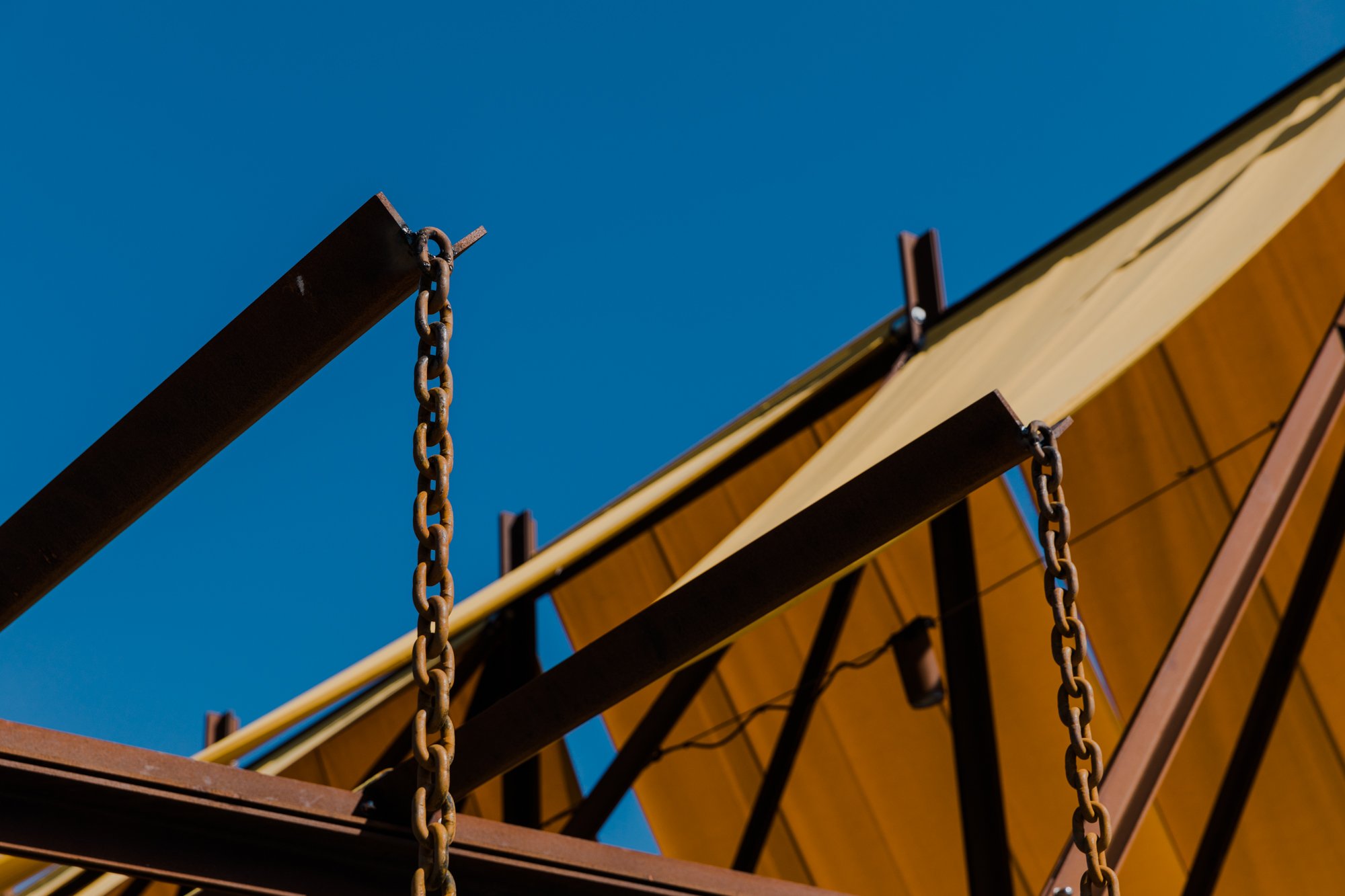
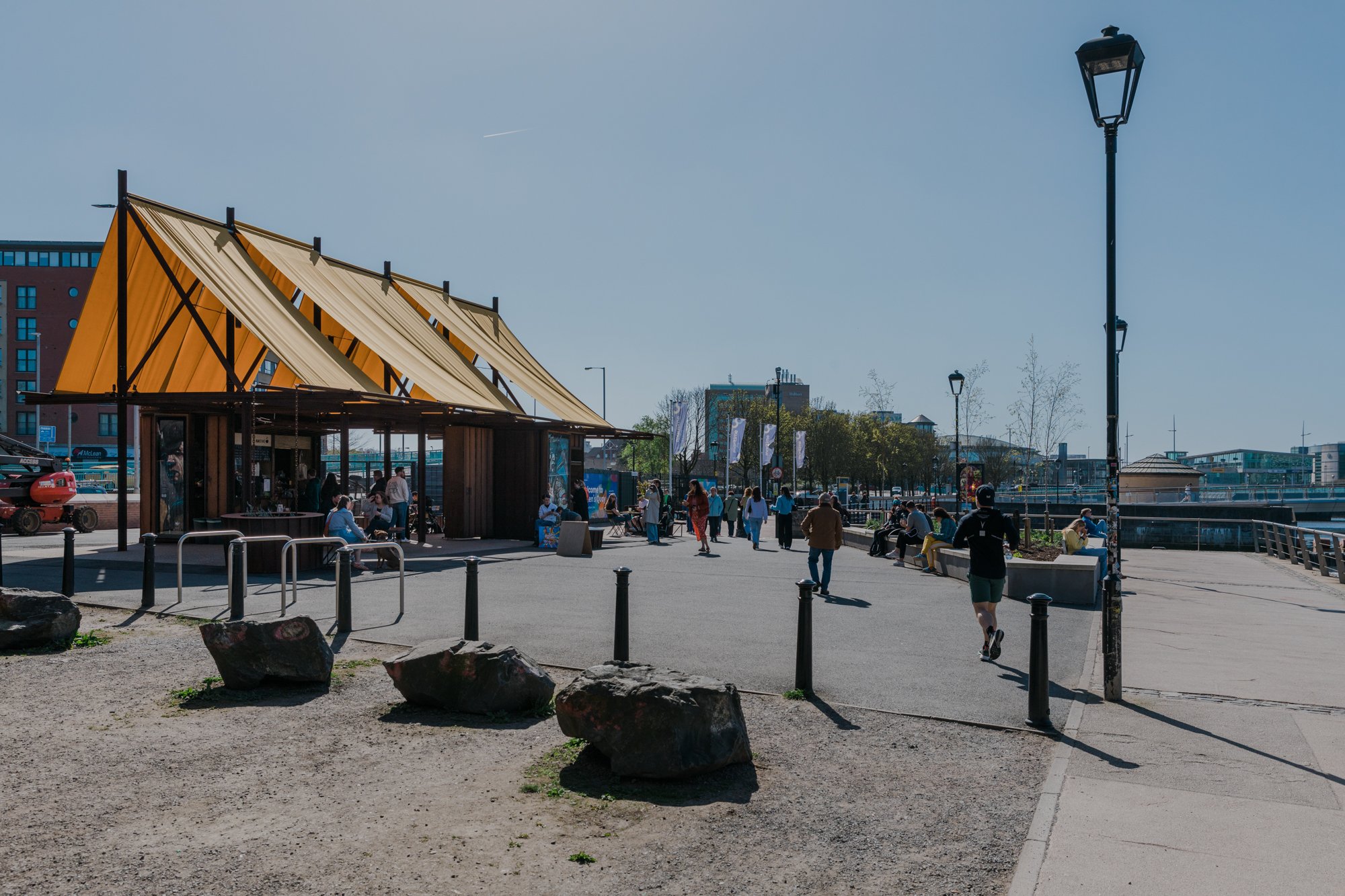
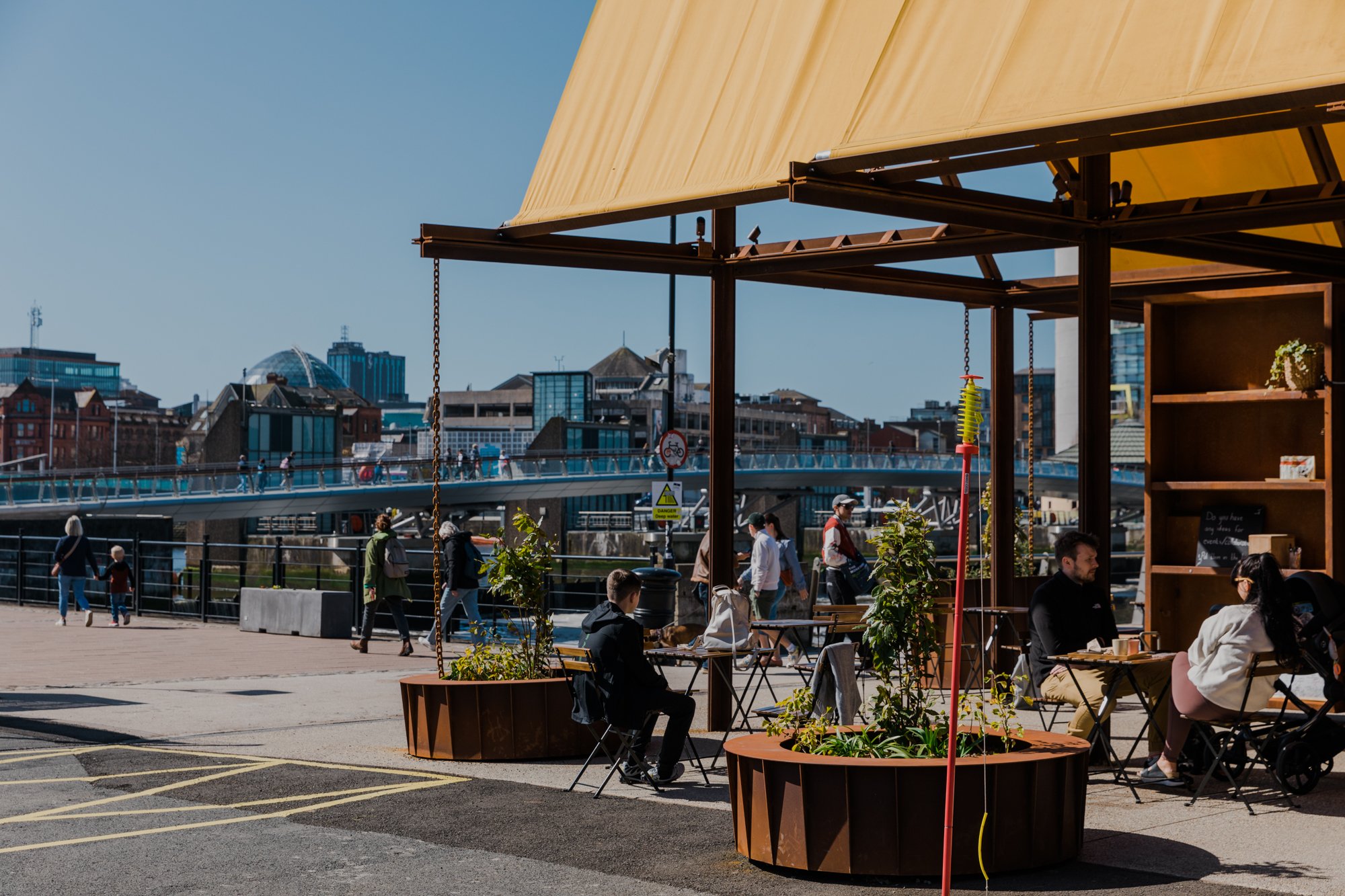

Impact
The Queen’s Quay Kiosk is a landmark placemaking project on Belfast’s historic waterfront—delivered through a partnership led by Belfast City Council, Maritime Belfast, and the Department for Communities.
Situated between the SSE Arena and the Lagan Weir pedestrian bridge, this kiosk reactivates a historically significant site once home to the Belfast & County Down Railway Station. Now a key gateway to the Maritime Mile, Queen’s Quay welcomes over 3 million visitors annually. The kiosk brings fresh energy to this stretch of waterfront - transforming underutilised land into a dynamic social space, complete with native planting and space for all sorts of community events and pop-ups.
The design supports Belfast’s wider regeneration goals, including city centre living and increased footfall, aligning with the ambitions set out in the Belfast Agenda. With its welcoming presence and accessible layout, the kiosk enhances the public realm and acts as a springboard for further community activation.
At its heart is a belief in collaboration: the kiosk is not just a café—it’s a civic space for all sorts of things to happen around it from craft, conversation, art, running clubs, music - with the Native team open to all sorts of collaborations.
Sustainability in Practice
The Queen’s Quay Kiosk is a developing project, demonstrating how thoughtful design and considered operation can support environmental and social sustainability.
Operated by Native Coffee, the kiosk reflects a circular economy ethos—from energy-conscious systems and minimal packaging to an emphasis on reusables. Compostable materials are used only where necessary, and customers are encouraged to bring their own cups through a Reusable Cup Campaign featuring Huskee products and HuskeeSWAP—a swap-and-go scheme for busy lives.
Coffee is sourced from Groupwork in Castlewellan and delivered in reusable buckets, ensuring reduced packaging and fair producer compensation. Waste coffee grounds are passed to The Gardener’s Kitchen, supporting local composting efforts. Dine-in customers are served in ceramic cups, promoting a culture of slowing down and staying longer.
Community, Collaboration and Circular Thinking
Ethical dairy alternatives offered at no additional cost
Recycling stations and Climate Café events
Active travel incentives for staff, including deliveries by bike
Partnerships with local suppliers who share Native’s values, from Saintfield’s Kin & Folk to Steeper Culture’s Belfast-brewed kombucha
Native’s commitment extends to platforming other makers and microbusinesses. The kiosk includes a second trading pod, used for pop-ups, exhibitions, and community events—reinforcing the value of shared space and shared purpose fostering opportunities for emerging businesses, artists, and social enterprises.
Check out Native Instagram for updates on what happens in the space - link

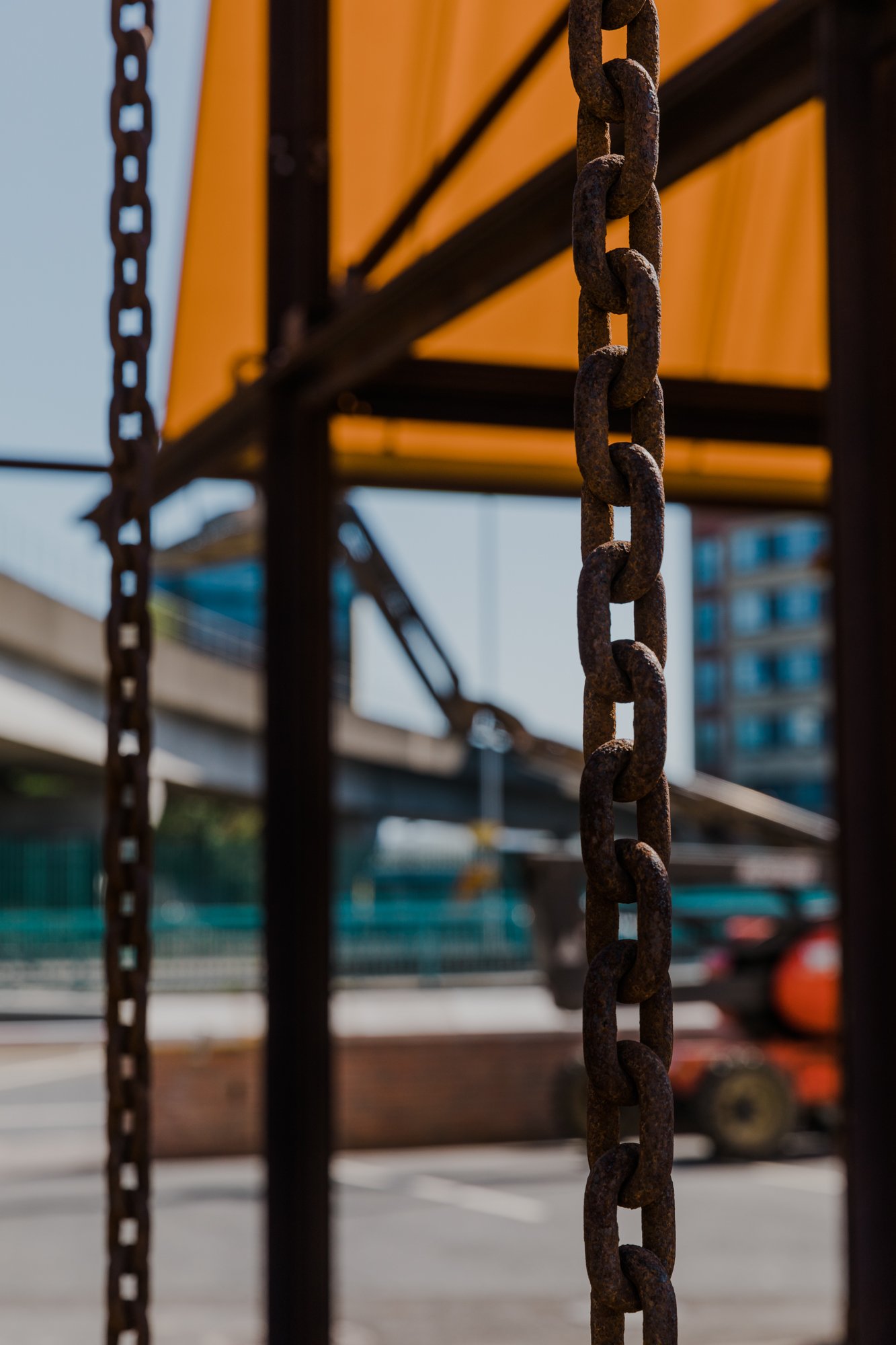
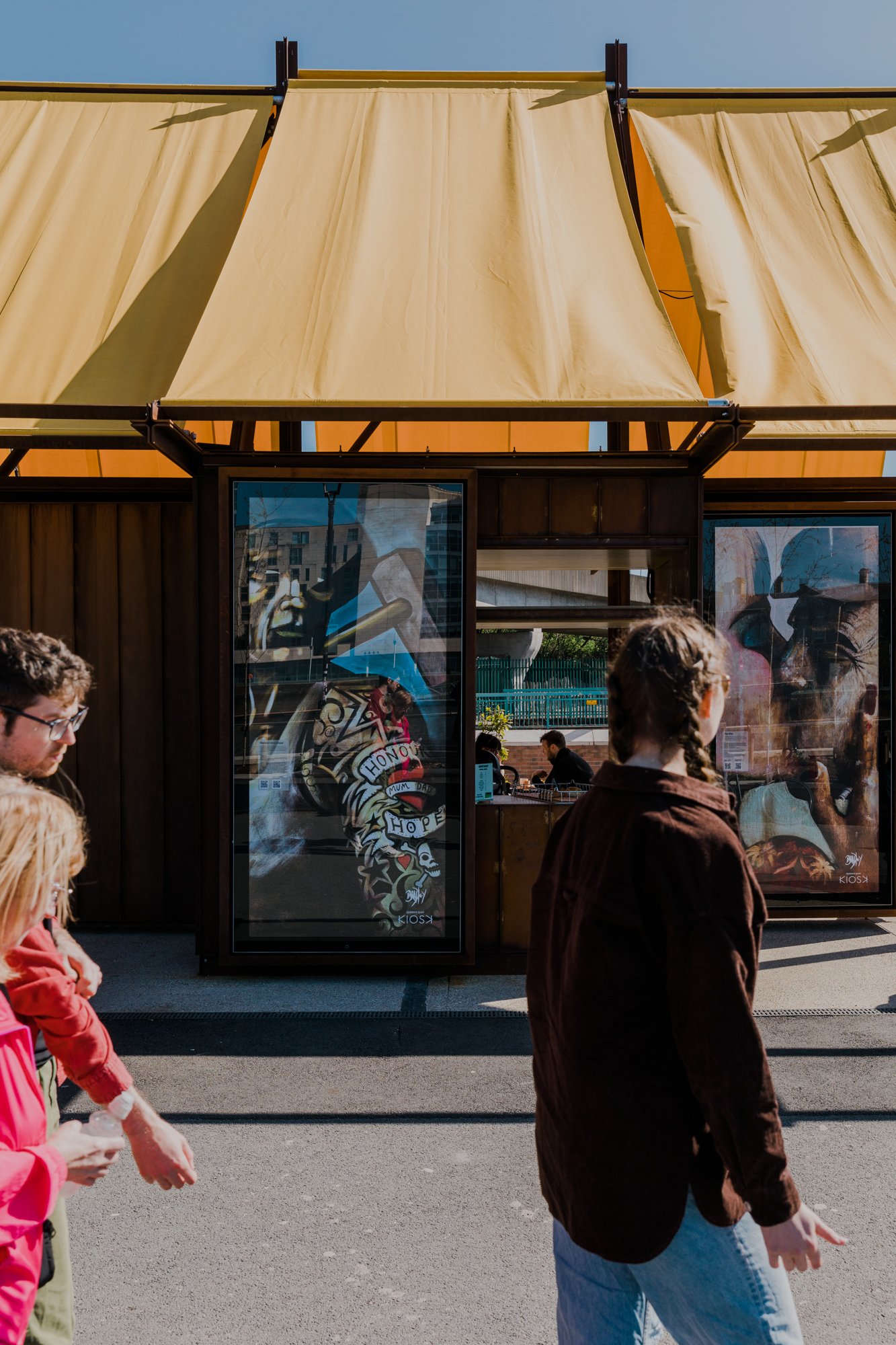
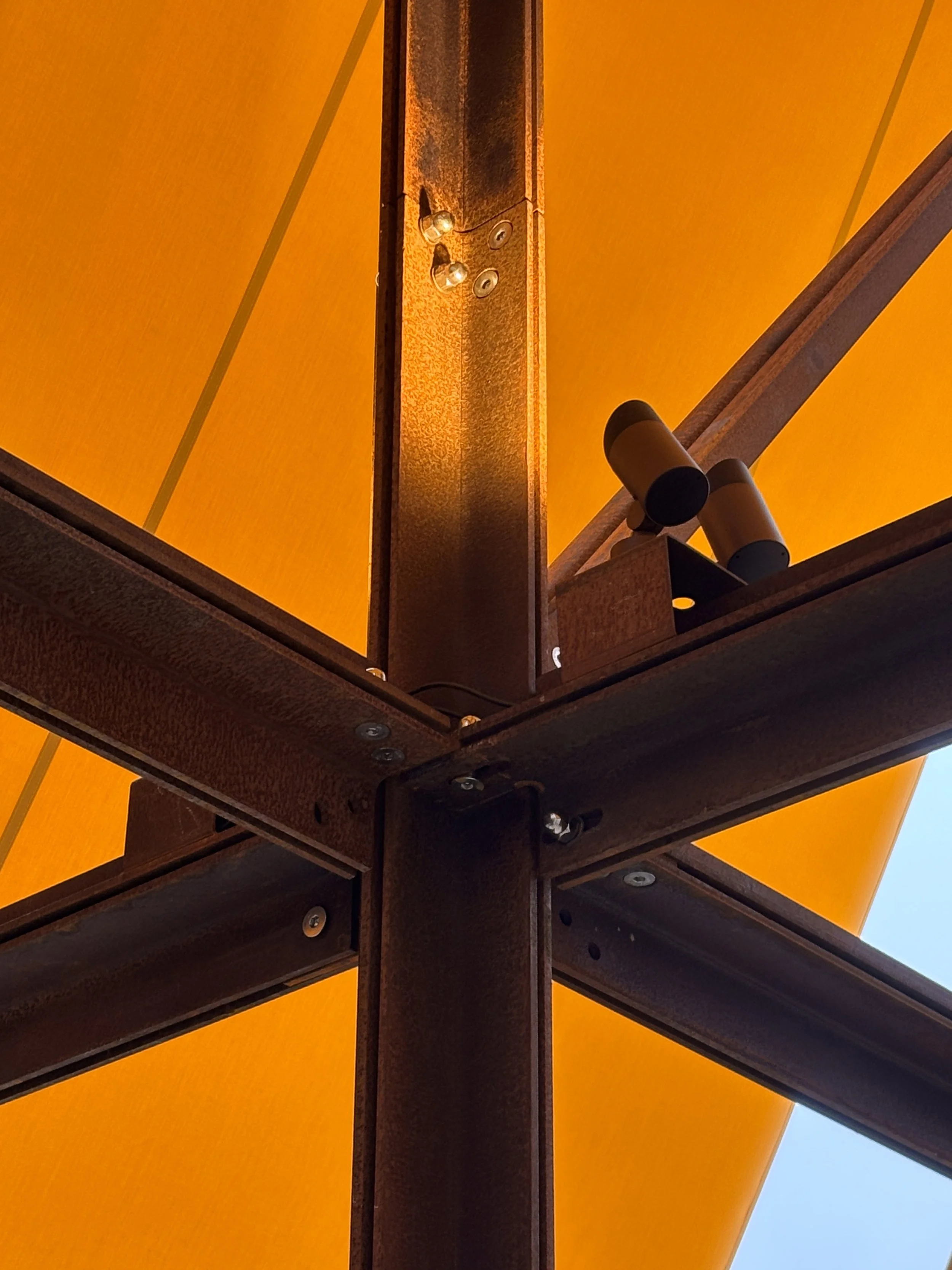
Process
-
Developed as part of the cities covid recovery strategy - the space was designed to elevate a simple coffee kiosk to something which was dynamic and civic to help activate an underutilised space.
Technical Development
The project was developed through various sketches and models. Working with advanced manufacturing and engineering in collaboration with Fabrite - the weathering steel form
